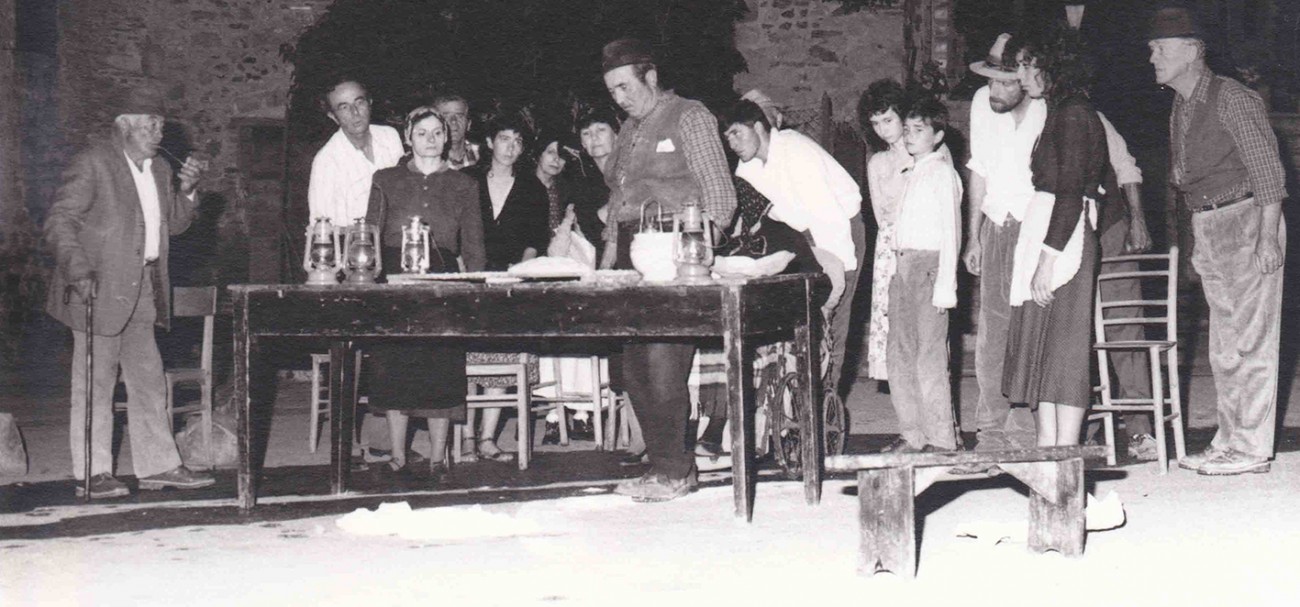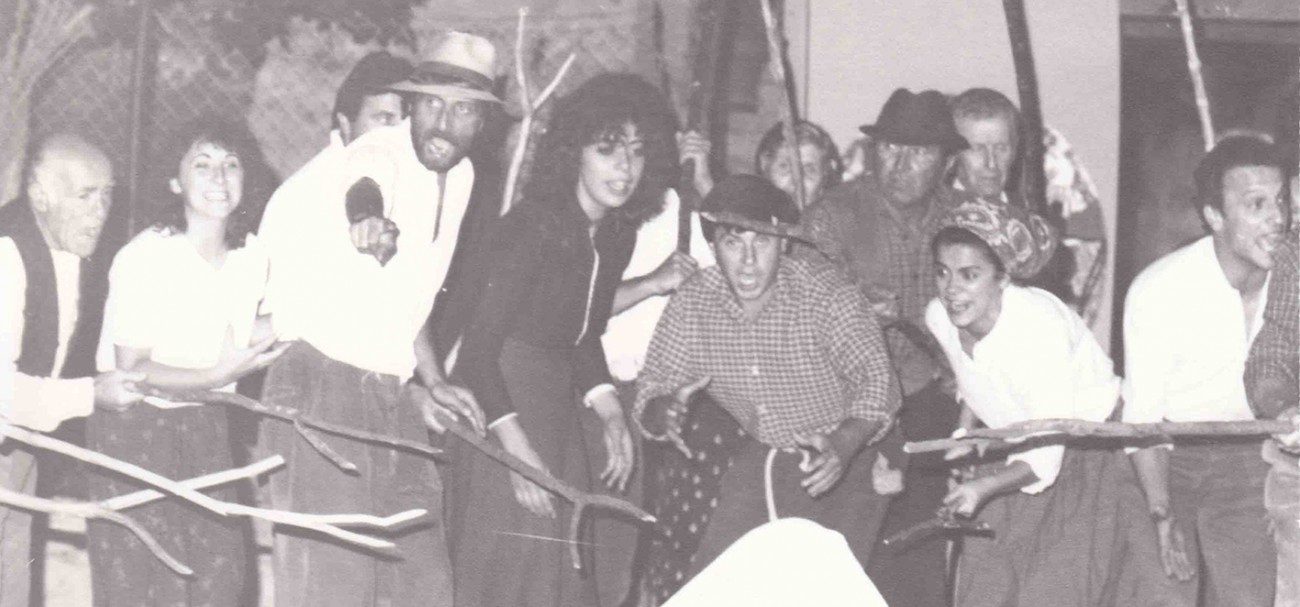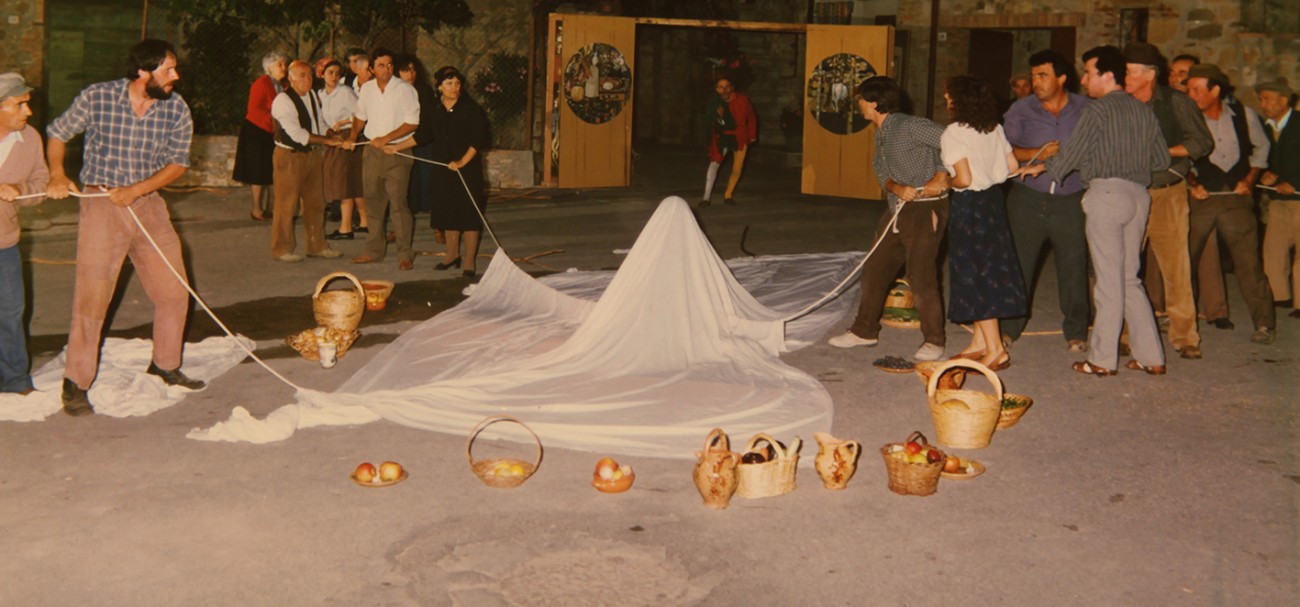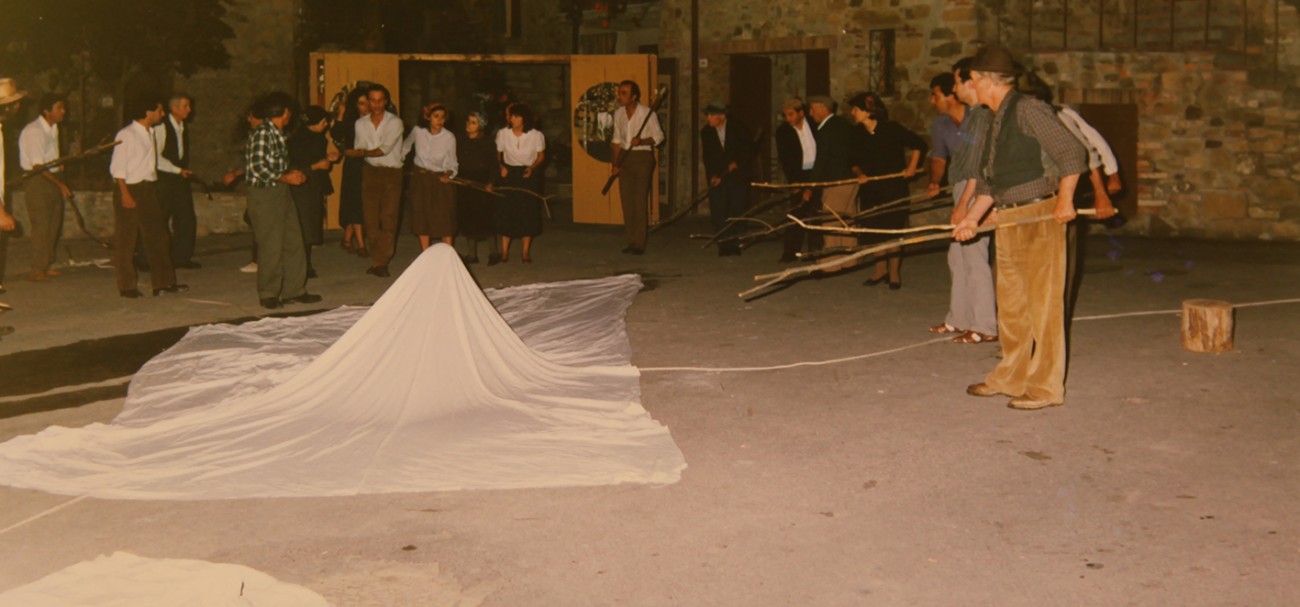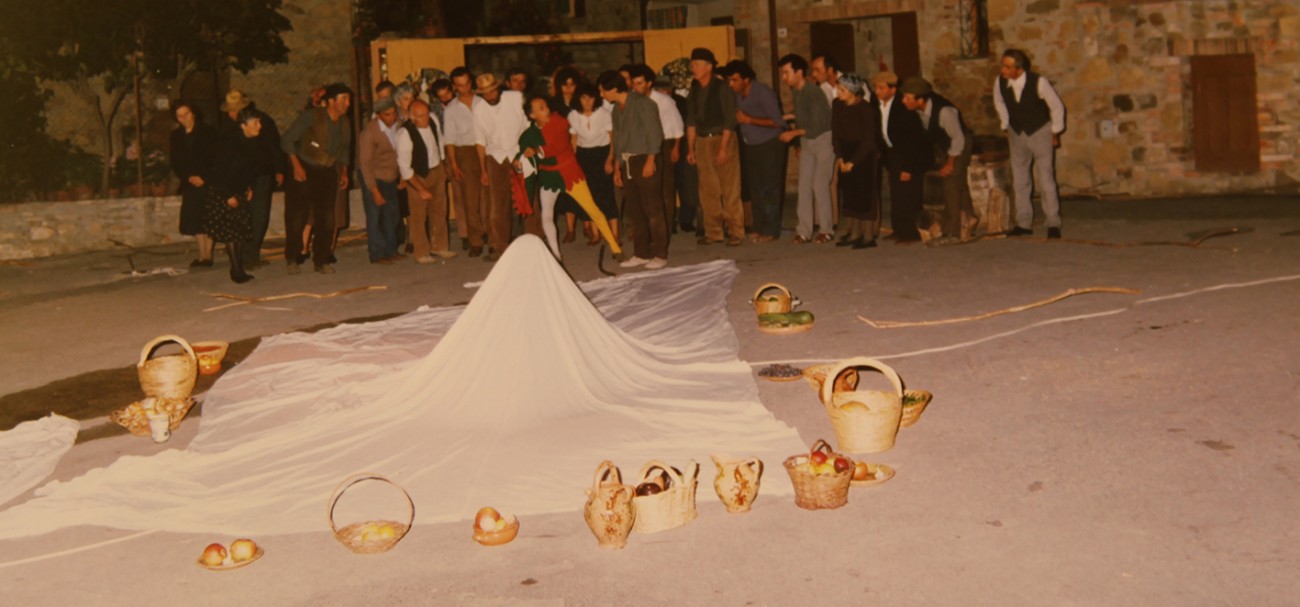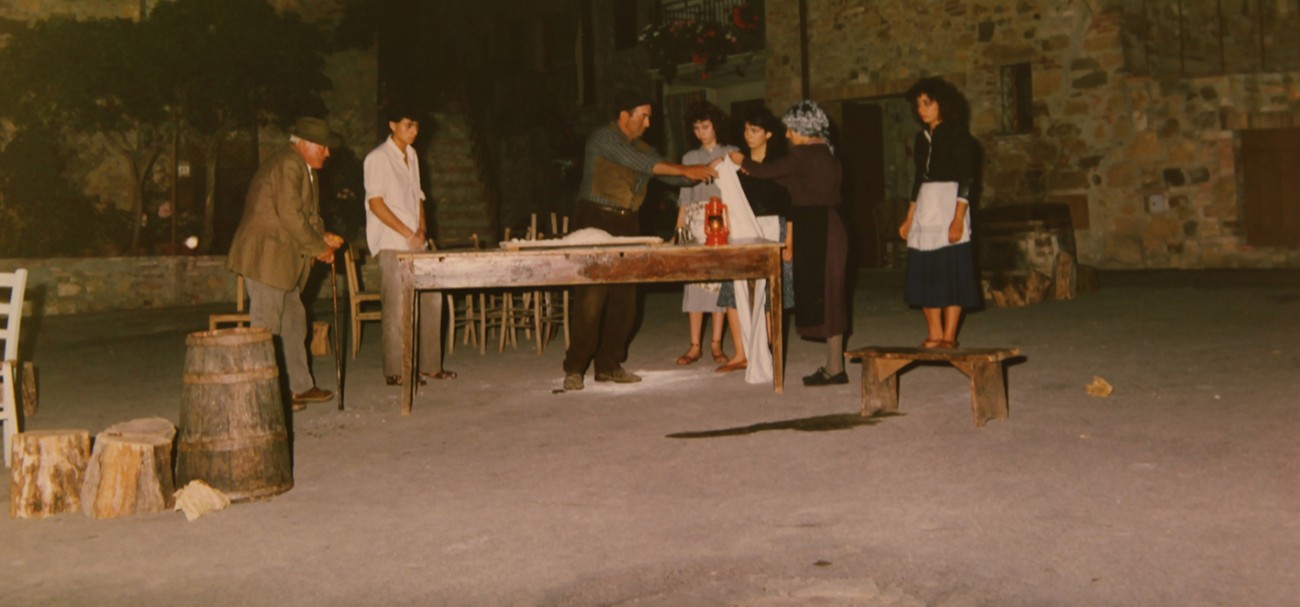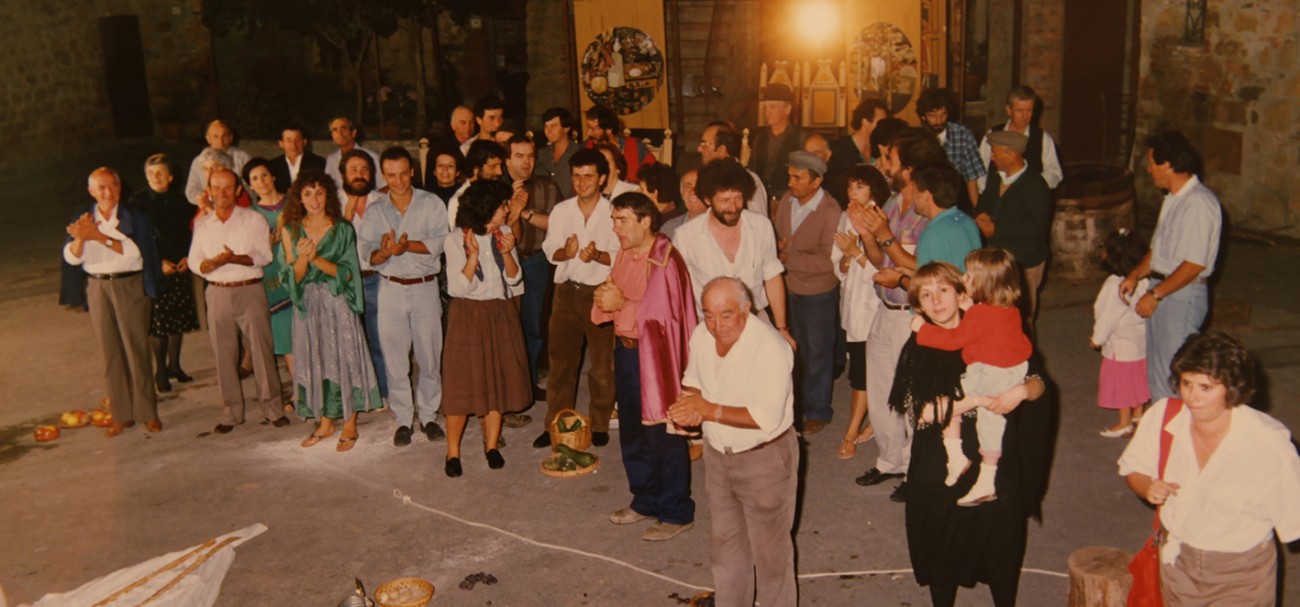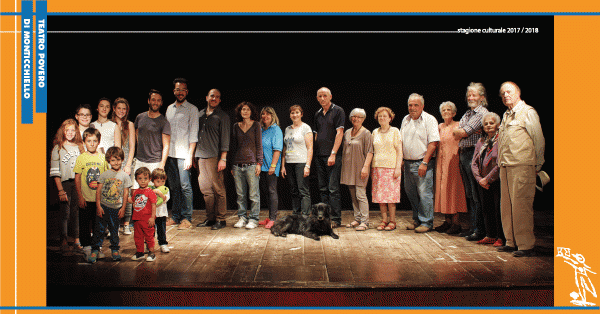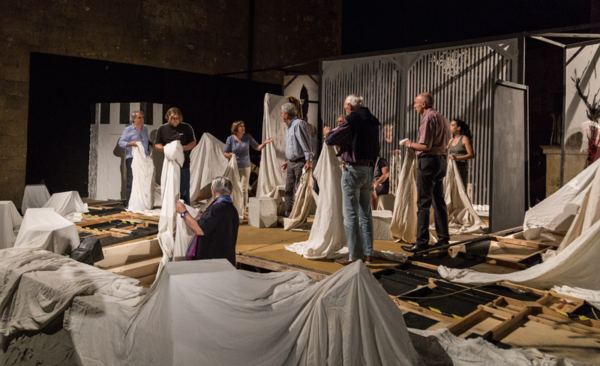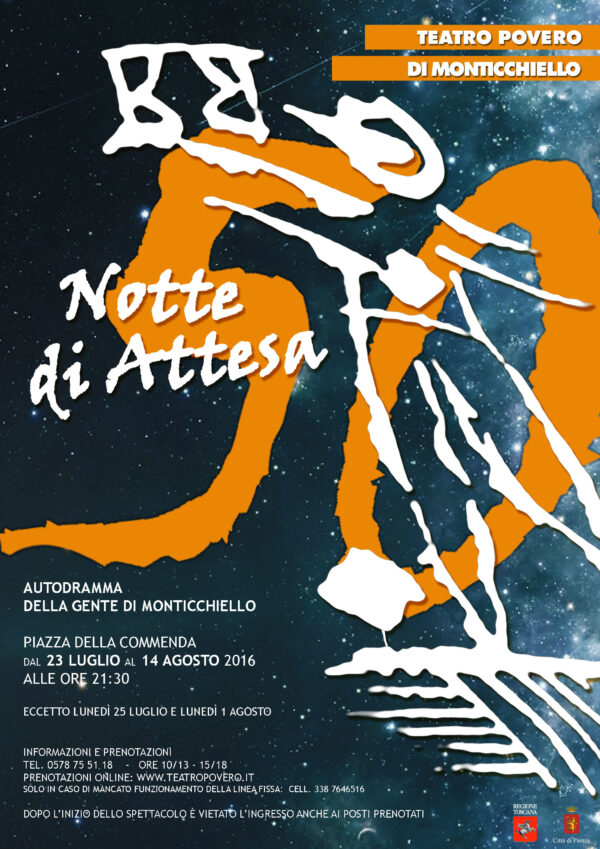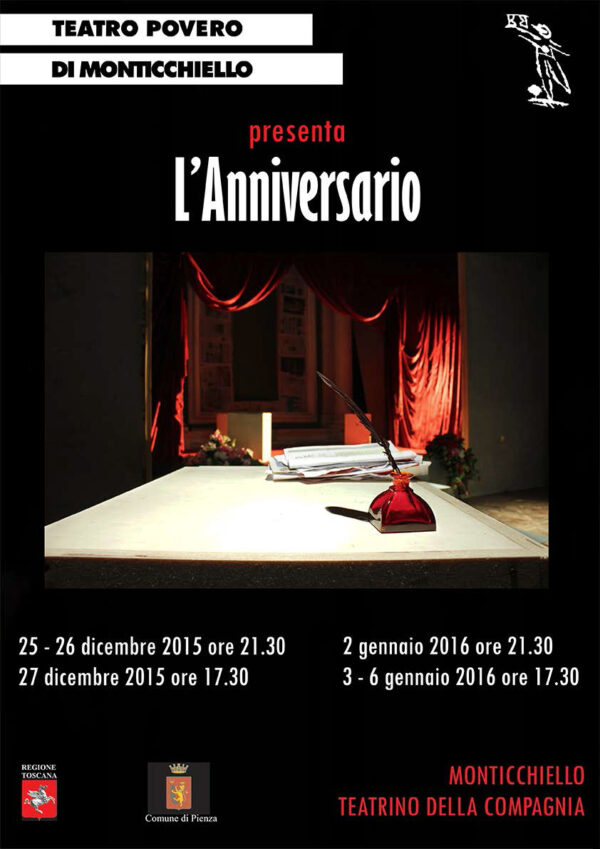Early in 1987, the Val d’Orcia appeared to be threatened by a project to unload toxic industrial waste into its landscape. This was described in newspapers as “an ecological disaster in one of the world’s most beautiful valleys”: the violent intrusion of the products of so-called post-industrial civilization into a landscape which testified to a geological era from the distant past. So at this time there were raging debates about bio-ethics, about biological energy, and on the possibility of major manipulations of natural resources—debates which of course have not since gone away.
It was this threat which motivated the people of Monticchiello—a village which offers one of the best views of the Val d’Orcia—to conceive this autodramma under the direction and co-ordination of Andrea Cresti.
During the months of preparation, the threat then receded. Meanwhile the play which emerged was not a simple theatrical ‘manifesto’, but rather a metaphor based on irony, a kind of fable which was both threatening and allusive, a bad dream ending in a comic gag. The story, if one can call it that, was set in an age long past, in the countryside, in a kingdom made up of scattered farmhouses like those which operated under the sharecropping system. Strange phenomena were discovered in the fields: magic breadcrumbs planted in the earth, producing giant versions of crops and cereals, distorting natural forms. The story developed so as to involve a witch, a young girl with strange allegorical powers, a peasant prince…. Lots of characters, all strange but with meanings not too hard to decipher. A play which was topical and fantastical at the same time; a play to make the audience reflect, and perhaps to provoke a rueful smile.

